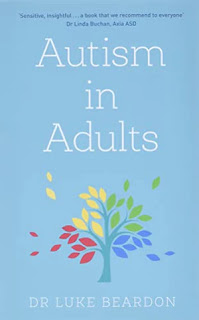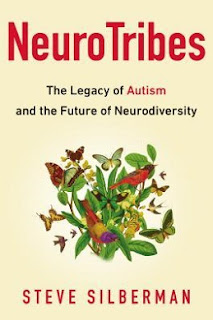 It’s seven years since I found out I was autistic. I’ve written a blog post about it, because I wanted to think about how it felt then and how it feels now.
It’s seven years since I found out I was autistic. I’ve written a blog post about it, because I wanted to think about how it felt then and how it feels now.
I’ve also written a list of books that I have found useful. Because they might be useful to other people, and because I like lists.
Actually, I’ve written two lists. This is the first one.
These books were on the reading list I was given after my diagnosis in 2018. Here’s what I learnt, and what I recommend.
Aspergirls
by Rudy Simone
I’d already read this and it gave me the confidence to go for a diagnosis. It looks at the experience of autistic girls and women in a way that hadn’t been done before. There is a checklist at the back which gave me some lightbulb moments.
If you’re an autistic woman (or suspect you might be) and you only read one book about autism, make it this one.
Autism and Asperger Syndrome in Adults
by Luke Beardon
The latest version is called Autism in Adults (because we don’t say “Asperger syndrome” any more).
Luke Beardon is one of the good guys: an expert who actually listens to autistic people. Check out this very empathetic blog post.
If you’re not autistic and you only read one book about autism, please make it this one.
Some of his insights are:
1. You shouldn’t define (or identify) autism by observable behaviour.
“One of the few things we know about autism is that there is no such thing as ‘autistic behaviour’… Saying a person has ‘autistic traits’ could be seen as essentially meaningless.”
It makes more sense to think about his equation: “Autism + environment = outcome”. What might be perceived as autistic behaviour is a response to a difficult environment.
2. Autism is not an illness.
It’s “a neurological variance” and “a way of processing and thinking”.
“Autism is, relative to the PNT [predominant neurotype aka neurotypical], a differing cognitive style and a different way of processing information within the social, communication and sensory domains, which significantly affects an individual’s way of interpreting and experiencing the world.”
Odd Girl Out
Subtitle: An Autistic Woman in a Neurotypical World
by Laura James
A memoir by a journalist who was diagnosed in her 40s. I identified with a lot in this book.
“The good feelings can be as overwhelming as the bad. They are just as big. I can’t name my feelings. I don’t recognise them.” (I found out later this is called alexithymia.)
On her first meeting with a therapist: “What would you say your main issues are?” “I’ve made a list.” (This made me laugh.)
Women and girls with autism spectrum disorder
Subtitle: Understanding life experiences from early childhood to old age
by Sarah Hendrickx
There’s a new version out now with the more user-friendly title Women and Girls on the Autism Spectrum (because we don’t say “disorder” any more).
Reading it again more recently, I found I was responding to her points about ageing. Spending your life trying to be “100 per cent perfect and capable”, then as you age discovering that “my need and energy to maintain the pretence are just about gone.”
She’s also very good on the difficulty in communicating with neurotypicals:
“The confusing part is that in the neurotypical world, the norm is to not expect things to be as they have been stated to be, which is entirely bizarre as a given. The discrepancy between people’s words and actions is not only stressful due to the change in expectations that has to be processed (hard work) but also because it is not true and therefore illogical…. The unanswerable question of autism is ‘Why do people do that?’”
Other things I liked:
On adult diagnosis: “It explains everything. It makes sense of everything. And autistic women need to make sense of everything.” Oh yes.
Discussing how many autistic women authors there are: “Perhaps autistic women have an innate drive to communicate.” Yup. That's why I write this blog.
I think I might be Autistic
Subtitle: A guide to Autism Spectrum Disorder Diagnosis and Self-Discovery for Adults
by Cynthia Kim
I didn’t get to read the book but much of the content is on her website Musings of an Aspie and it’s very helpful.
I really identified with this post about masking. It made me sad.
My second reading list
After my diagnosis, I went through every book I could find in the library about autism. The best ones were:
NeuroTribes
Subtitle: The Legacy of Autism and the Future of Neurodiversity
by Steve Silberman
A must-read. Silberman wasn’t autistic but he was a great autism ally and advocate. This groundbreaking book is an excellent history of autism and approaches to it.
Pretending To Be Normal
by Liane Holliday Willey
Another memoir, and I identified with a lot of what she says. She talks about autistic people feeling ‘on the outside, looking in.’ That’s what my life has always felt like.
And there's more...
During the past few years, there have been a lot more books about autism written by actually autistic people.
I’ve listed some of my favourites in the next post: Autism resources part 2: Recent books



No comments:
Post a Comment